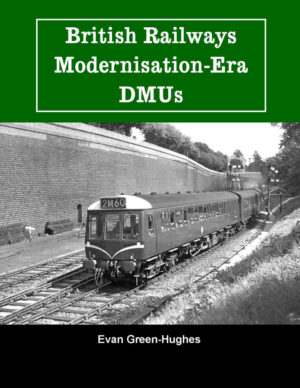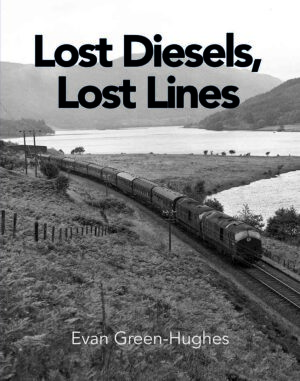
First Generation Diesels in East Anglia – AVAILABLE AS DIGITAL COPY ONLY
Price range: £13.50 through £14.50
by Alan C Butcher
- Description
- Additional information
- Reviews (0)
Description
the eastern counties of England have a fascinating railway history. Much of the early history involves the Great Eastern Railway (GER), which either absorbed or built the majority of the network. Not having the heavy industry of some parts of the country, the lines were initially reliant on agricultural traffic. The opening up of the east coast ports to international trade stimulated traffic growth that is increasing still. Holiday traffic also helped the growth of the railways, Cromer and Hunstanton being just a couple of seaside destinations selected by those taking a break. Today Cromer still has its railway connection, whilst some in Hunstanton would like it back – if only to ease the journey to King’s Lynn. Slightly further to the west, the residents of Wisbech are campaigning for a reopening of the line to March for passenger traffic.
The GER’s monopoly was challenged to the north of Norwich by the Midland & Great Northern Joint Railway (M&GN) that ran west to east across Norfolk. Running across the country from Peterborough and Bourne, via South Lynn it reached Cromer, Great Yarmouth and Norwich. On the east coast the GER and M&GN co-operated by running the Norfolk & Suffolk Joint (N&SJt) lines from Lowestoft to Yarmouth and North Walsham to Cromer. Whilst the GER became part of the London & North Eastern Railway (LNER) at the grouping on 1st January 1923, the M&GN and N&SJt remained joint entities operated by the LNER and London, Midland & Scottish Railway (LMS) until Nationalisation.
Following the Nationalisation of the railways in 1948, the new owners – British Railways (BR) – began looking at what they now owned, the returns being made, and the investment required following World War 2. For a number of lines in Norfolk and Suffolk the figures did not look good. A study of Atlas of Railway Station Closures illustrates the routes closed to passenger traffic in the early 1950s. Virtually all the M&GN network was closed by the end of the decade.
Following the appointment of Dr Richard Beeching as Chairman, his report on the reshaping of the railway did not make for pleasant reading for those in Norfolk and Suffolk. Over half of the surviving passenger network lost its passenger services during the mid-1960s. In addition, several routes earmarked for ‘modernisation’ – rationalisation was a better term – succumbed by the end of the decade. The cost cutting exercise had effectively cut too much and the limited services could not compete.
Although a number of lines remained open for general freight traffic, a lack of heavy or awkward loads meant that with the easier movement of goods by road, many had closed within a short period. With the demise of the railways, road improvements have obliterated the former track bed south of Great Yarmouth; and part of the A47 west from Dereham follows the route to King’s Lynn.
The publication of this book just misses the anniversary of the closure of the M&GN, 60 years ago. At the same time, the first generation of main line diesels was being introduced, BR had yet to construct its last steam locomotive – No. 92220 Evening Star.
There was little change in the eastern England railways before the widespread cuts of Dr Breeching, and others, after the year 1959. Modern diesel traction failed to save many local railways, meaning vast areas of the East Anglia are now devoid of them.
It was “too little, too late”. There were only a few short years where diesels train operated in the Eastern region. Thanks to the vivid photography of the likes of Dick Riley and Dr Ian C Allen, we can now feast our eyes on the images from the brief period in history.
Alan Butcher, a railways enthusiast and East Anglia resident, brings the images to life with his expertise of the area.
The book covers two distinct yet conjoined parts of history – early diesels and long closed lines.
It contains 112 pages of unashamed nostalgia depicting a railway system in transition.
Preview Pages
Additional information
| Weight | 540 g |
|---|---|
| Dimensions | 27.3 × 21.5 cm |
| Pages | 112 |
| Cover Choice | Paperback, ebook |
| Illustrations | 178 |
| Format | Portrait |
Be the first to review “First Generation Diesels in East Anglia – AVAILABLE AS DIGITAL COPY ONLY”
You must be logged in to post a review.












Reviews
There are no reviews yet.